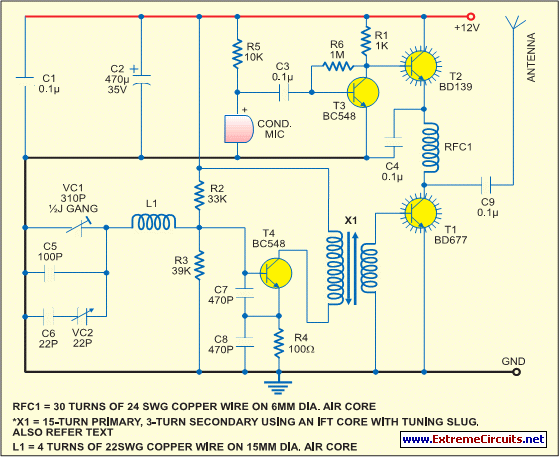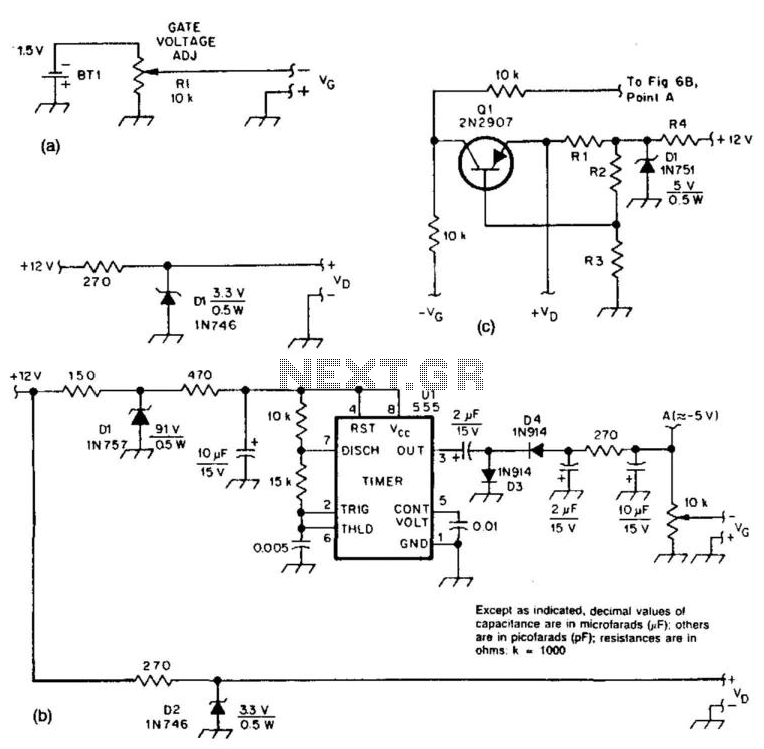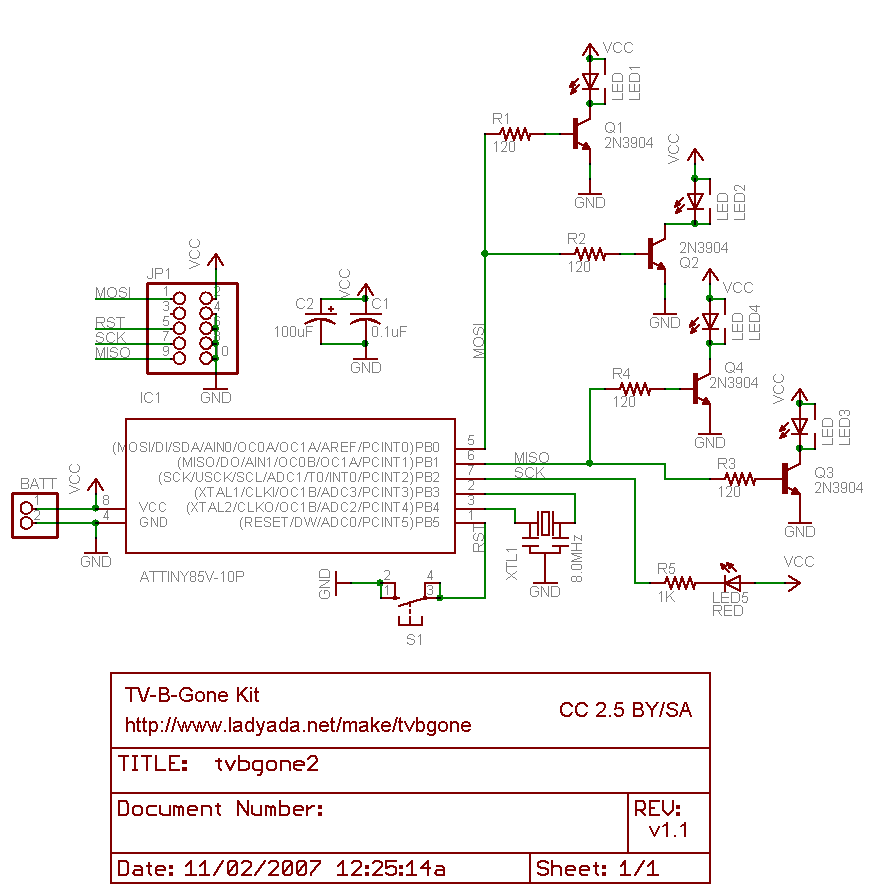
Sine Wave VFC to Use with PLL

The voltage-to-frequency converter (VFC) in this circuit produces a satisfactory sine-shaped output; however, it lacks good voltage-to-frequency linearity and exhibits a frequency stability of approximately 0.2%. The LM331 is an excellent choice for a linear and stable voltage-to-frequency converter, providing a pulse output. This circuit incorporates components such as a sine wave generator, VFC, phase-locked loop (PLL), voltage-to-frequency converter, and integrator.
The circuit utilizes the LM331 integrated circuit, which is specifically designed for converting voltage levels into corresponding frequency signals. The LM331 operates by generating a frequency output that is linearly proportional to the input voltage, thus ensuring high precision and stability. In this application, the LM331 is configured to improve the linearity of the voltage-to-frequency conversion process, addressing the shortcomings of the initial VFC.
The sine wave generator produces a smooth, periodic oscillation that serves as the input signal for the VFC. This input is transformed into a frequency signal that can be further processed or analyzed. The PLL in the circuit plays a critical role in maintaining synchronization between the output frequency and a reference frequency, enhancing the overall stability of the system.
The integrator component is employed to smooth out any rapid fluctuations in the output frequency, ensuring a more consistent signal. This is particularly important in applications where precision timing is essential. The combination of these elements creates a robust and reliable circuit capable of delivering accurate frequency outputs with minimal distortion.
Overall, this configuration leverages the strengths of the LM331 to produce a high-performance voltage-to-frequency conversion system, suitable for various electronic applications requiring precise frequency generation and stability.The VFC in this circuit puts out an adequate sine-shaped output, but does not have good V-to-F linearity, and its frequency stability is not much better than 0.2%. An LM331 makes an excellent linear stable V-to-F converter, with a pulse output; Sine Wave generator, VFC, PLL, V-to-F converter, integrator, LM331,.
🔗 External reference
The circuit utilizes the LM331 integrated circuit, which is specifically designed for converting voltage levels into corresponding frequency signals. The LM331 operates by generating a frequency output that is linearly proportional to the input voltage, thus ensuring high precision and stability. In this application, the LM331 is configured to improve the linearity of the voltage-to-frequency conversion process, addressing the shortcomings of the initial VFC.
The sine wave generator produces a smooth, periodic oscillation that serves as the input signal for the VFC. This input is transformed into a frequency signal that can be further processed or analyzed. The PLL in the circuit plays a critical role in maintaining synchronization between the output frequency and a reference frequency, enhancing the overall stability of the system.
The integrator component is employed to smooth out any rapid fluctuations in the output frequency, ensuring a more consistent signal. This is particularly important in applications where precision timing is essential. The combination of these elements creates a robust and reliable circuit capable of delivering accurate frequency outputs with minimal distortion.
Overall, this configuration leverages the strengths of the LM331 to produce a high-performance voltage-to-frequency conversion system, suitable for various electronic applications requiring precise frequency generation and stability.The VFC in this circuit puts out an adequate sine-shaped output, but does not have good V-to-F linearity, and its frequency stability is not much better than 0.2%. An LM331 makes an excellent linear stable V-to-F converter, with a pulse output; Sine Wave generator, VFC, PLL, V-to-F converter, integrator, LM331,.
🔗 External reference





